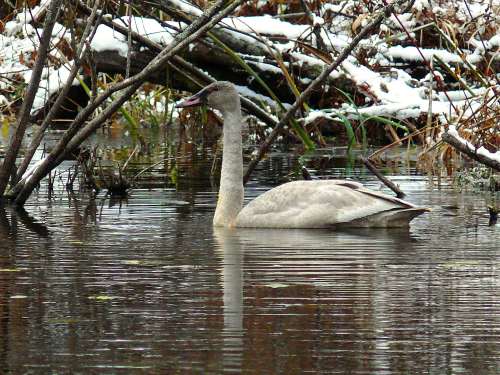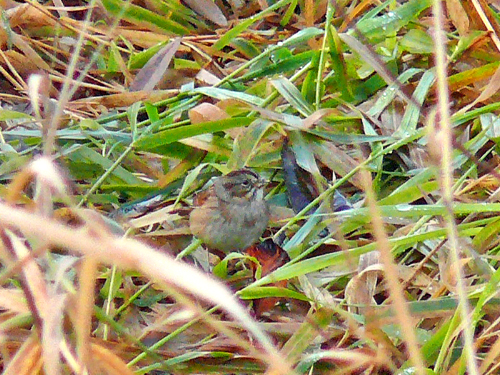Oct |
What to see in November? |
Dec |
|
| Week 45 | Week 46 | Week 47 | Week 48 |
By my reckoning, November marks the beginning of winter – short days, rain, flooding. Migration is over, but over the next four months, things are not static.
November is another good month for geese, and large flocks can sometimes be found on grass fields or flying overhead. Besides Canada Geese, look for Cackling Geese, which look like miniature Canadas. Also possible are Greater White-fronted Geese and even Snow Goose. If you’re really lucky, you may see a Trumpeter or Tundra Swan too.
This can be a good month for ducks too, though the resident Bald Eagles hunting the north end of Lake Sammamish may keep duck numbers lower than in the past. Another bird that may be visible from the lake platform is Western Grebe, with their long, thin black and white necks. They may stay pretty far out on the lake, though. Another bird possible well out on the lake are Common Loons in winter plumage.
Grass fields apparently produce many earthworms, and possibly other grubs, which attract gulls to the fields at this time of year. Most are Mew Gulls – small gulls with peg-like yellow bills. Amongst them may be Ring-billed, California, and the much larger Glaucous-winged Gulls.
Short-eared Owls might be seen pre-dawn over the East Meadow. Northern Shrike and Western Meadowlark may be found in the East Meadow later in the day.
Rarities in November have included Brant, Trumpeter and Tundra Swans, Redhead, Red-necked Grebe, Cattle Egret, Greater Yellowlegs, Dunlin, Bonaparte’s Gull, Franklin’s Gull, "Thayer’s" Iceland Gull, Northern Saw-whet Owl, Red-naped Sapsucker, Hutton’s Vireo, Horned Lark, American Tree Sparrow, and Swamp Sparrow.
|
|
|

